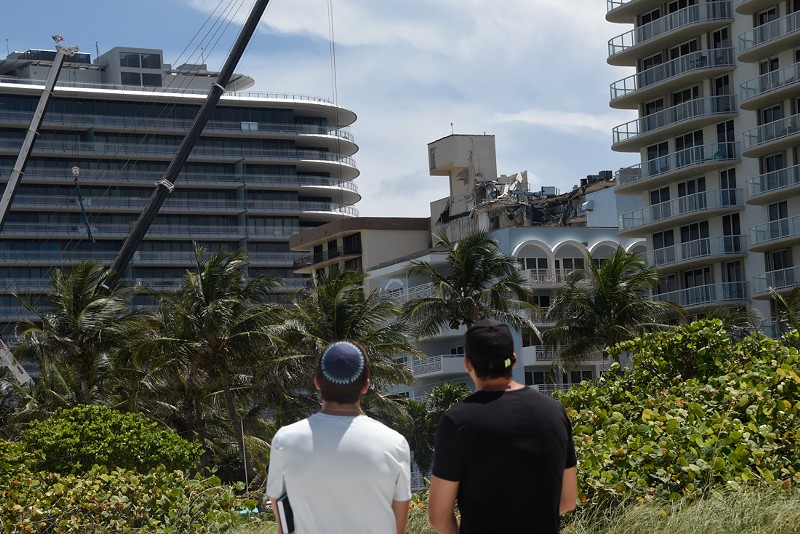Daniel Ciraldo, executive director of the Miami Beach-based Miami Design Preservation League (MDPL), says his organization has recently fielded dozens of calls and Facebook messages from property owners and tenants wanting to know more about the buildings they live in. Many are wondering how to find out whether they're living in a structure with known safety issues.
Under Miami-Dade County code, all buildings that have stood for 40 years must go through an inspection for structural and electrical safety and then issue a report to the local building department. After the initial 40-year inspection, those buildings must be recertified every ten years. The rule excludes single-family homes, duplexes, and buildings with a capacity of ten or fewer occupants.
To help residents navigate the often-confusing process of retrieving public records about their buildings, the MDPL constructed an interactive map of Miami Beach that can be easily searched for information. The map shows all properties that had been issued violations related to their 40-year recertification as of June 28. Each cited property is represented by a pin that shows the violation case number, which residents can then search on the city's online portal for more information.
"A big part of preservation is the maintenance of buildings. This is not the sort of thing we normally do, but given the situation in Surfside, everyone has a renewed interest in their buildings and the structures around them," Ciraldo tells New Times.

This map shows Miami Beach buildings with violations related to their 40-year safety recertifications. The data was captured on June 28 and goes back to 2006.
Screenshot courtesy of the Miami Design Preservation League
"A lot of people don't always think about how their building is being maintained. Sometimes, we all take it for granted," he says. "In a place like South Florida, where we have sea-level rise, hurricanes, and saltwater that impacts structures, it is important to have a qualified professional to look at your building to proactively identify problems that may occur."
Ciraldo says Miami Beach's transparency with building violations made it easy to locate information, but not every city offers the same ease of access. He tried to get data for recertification violations in Surfside, but the town does not have a searchable online portal. The New York Times was able to use Miami-Dade County data and public records to create maps showing 40-year-old highrise structures in Surfside and the rest of the Miami Beach barrier island.
Some local municipalities maintain websites where you can search for permit applications by address, while others require you to contact the local building department to check the status of a building.
The City of Miami uses the iBuild Miami online portal for permit applications. The website requires you to create an account (at no charge). Once you log in, you can search for specific properties to view outstanding applications and violations.
The City of Coral Gables also has an online portal that allows residents to search for permits by property address and property owner. You can even search all records by permit type.
Hialeah's permit search website is a little less user-friendly. The portal doesn't allow you to search all outstanding permits by type, and its address-input interface takes some getting used to, as it requires each element of an address to be written in separate fields. The site does allow you to see inspection schedules for each of the city's building inspectors up to one day ahead of time.
For those living in unincorporated areas of Miami-Dade County, the county's Department of Regulatory and Economic Resources has an online service that allows people to search for building regulation cases by address or property owner. You can also view reports on all active unsafe-structure violations within a certain timeframe, including buildings that had structural problems identified during 40-year recertification inspections.
If your city or town's building department doesn't have an accessible online service, Ciraldo suggests calling and asking for information directly.
"If there's a motto that comes out of this, it's 'Know your status and take the time to check,'" Ciraldo says. "This is gonna become a regular thing, just like preparing for hurricane season. None of us can take for granted that we live in a fragile environment, and we need a better understanding of the places we live."













